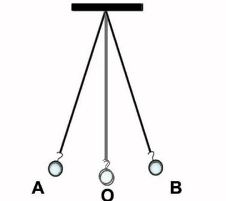Periodic and oscillatory motions
Oscillatory motion is a to and fro motion about a mean position and periodic motion repeats at regular intervals of time. All oscillatory motions are periodic and all periodic motions are not oscillatory
If the body is given a small displacement from the position, a force comes into play which tries to bring the body back to the equilibrium point, giving rise to oscillations or vibrations. For example, a ball placed in a bowl will be in equilibrium at the bottom. If displaced a little from the point, it will perform oscillations in the bowl. Every oscillatory motion is periodic, but every periodic motion need not be oscillatory. Circular motion is a periodic motion, but it is not oscillatory.

There are two main differences between an oscillation and a periodic motion. The first difference is that an oscillation happens in a single direction while periodic motion is generally described in 2 dimensional coordinates ./p>
There is also a second difference between an oscillation and a periodic motion. Unlike the first difference described above which is usually overlooked this is a major difference. An oscillation can be periodic or not. The classical example for a non-periodic oscillation is a damped oscillation. Its amplitude decreases over time, until the oscillation stops, thus the motion is not periodic.
